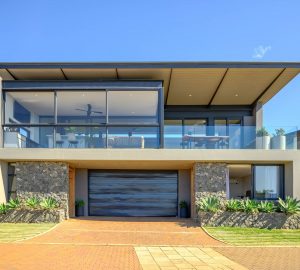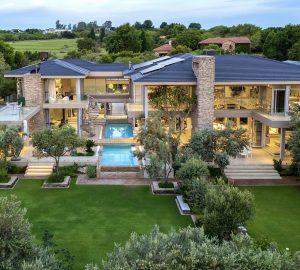Globally, green building activity is increasing so rapidly that it doubles every three years and has already grown into a trillion-dollar industry, according to the 2016 World Green Building Trends (WCBT) report.
South Africa is embracing sustainable building practices. While only formally adopted by the SA construction industry in 2007, the number of projects certified by the Green Building Council SA (GBCSA) has risen from just one in 2009 to 167 currently. For a housing project to qualify for a GBCSA rating, the building must achieve a saving of at least 20% on energy and water consumption.
According to the WCBT report, South African survey respondents indicated that 41% of their work is currently green. However, local respondents believe that the green activity thus far is simply laying the groundwork for a more fundamental shift in the market, with 61% reporting that they expect over 60% of their projects to be green by 2018. This is well above the global average of 37%.

If South Africa’s current levels of commitment to green projects is sustained, it appears likely that the country will emerge as a leader in the global green building market within three years.
It seems that SA’s commitment to green building is driven primarily by the view that it is “the right thing to do”, rather than being forced by regulation. At 40% of respondents, this is significantly higher than the global average of 25% and suggests that there is an ethical imperative at play locally as well as a business one.
Another key driver for going green in South Africa is the potential for “lower operating costs”. Not surprisingly, in a developing economy like SA, potential cost savings can help make the business case for sustainable building practices. According to the survey, SA is line with the global average on the importance of reducing energy consumption as an environmental reason for building green. However, a much higher percentage of South Africans consider reducing water consumption important than the global norm. In line with many other developing economies, protecting natural resources is also an important consideration in SA.
Unlike the previous two drivers, the 2016 research report reveals that in South Africa client demands and market demands are both much more important triggers in the current study than they were in the past, suggesting an increased understanding in the South African construction market of the value of green buildings.

Despite wider recognition of the value of sustainable construction in the market, the key obstacle limiting the growth of green building was identified by respondents as a lack of public awareness. Three additional challenges which were also identified include higher initial costs, a shortage of skilled green building professionals and the lack of political support and incentives.
The study revealed that globally green buildings offer significant operational cost savings compared with traditional buildings. Over a five year period, respondents expect a 14% saving for a new green building and a 13% saving for green retrofit and renovation projects. Building owners also report that green buildings – both new and renovated – command a 7% increase in asset value over conventional buildings.
The adoption of sustainable building practices in the local commercial property sector is already well established. It is anticipated that low-rise residential projects will be the next big growth sector for SA’s green building movement.

Encouragingly, green building is no longer the exclusive domain of the high-end residential market. The soaring cost of electricity, coupled with the threat of looming water shortages, means that it will increasingly become the norm to develop energy-efficient buildings. This will be particularly true in the price-sensitive affordable housing sector, where household incomes are under increasing pressure.
Already, home buyers and tenants are starting to realise that it is cheaper to live in a green house than a traditional one. While it may cost more initially to build a green home, developers can expect to recoup the additional costs through increased demand for their units.
Overall, the authors of the report believe that the latest survey data indicates that the global commitment to green building is steadily transforming the built environment.
Posted by The Know - Pam Golding Properties
Luxury Home: Melrose Arch
The Lifestyle Artistry of AURUM
you might also like
Increased interest in SA’s luxury residential property market, reports Pam Golding Properties
Tuesday 16th of April 2024





